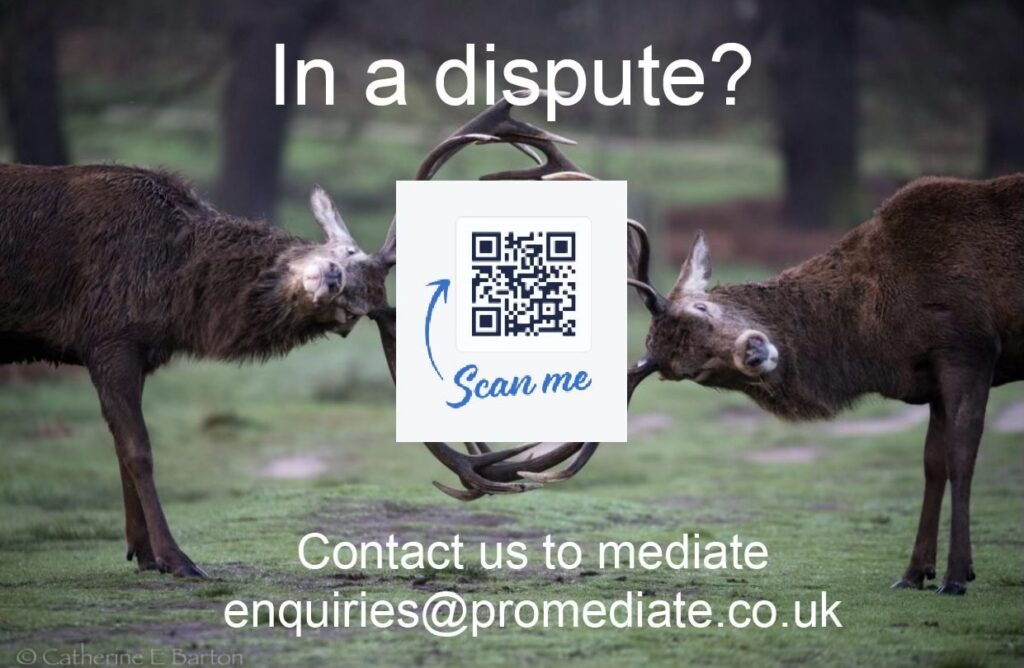The Power of Mediation: A Testament to Resolving Complex Disputes
Introduction
In the recent case of Ghenavat & Ors v Lyons [2023] EWHC 2428 (KB), the High Court delved into a tumultuous legal battle stemming from a breakdown in the relationship between business partners. The acrimony, which resulted in a claim for harassment, highlighted the complexities of modern disputes. While the courtroom drama unfolded, there was a subtle yet powerful suggestion from the judge: the case was ripe for mediation.
The Dispute Unveiled
The case revolved around relentless harassment, with the defendant inundating the claimants with over four hundred distressing communications. The courtroom saga, spanning five intense days of trial, painted a vivid picture of the animosity between the parties. Amidst this legal storm, the judge’s wise perspective emerged
The judgment was given following a five-day trial, at which all the parties gave evidence. The judge also heard evidence from a solicitor representing the claimants. There was also a seven-volume bundle of documents which the judge considered carefully.. it is likely that the legal costs involved were astronomical. Mediation was suggested early on but it does not appear that the offer was taken up.
The Call for Mediation
The judgment, while ruling in favour of the claimants, and finding that there had been harassment and that it was not necessary to bring a defamation claim, resonated with a compelling call for resolution. The judge, astutely acknowledging the unresolved business dispute and the impending Chancery proceedings, urged all parties to consider a transformative solution: mediation.
The judge’s words echoed the sentiment familiar to many seasoned legal professionals: the power of mediation transcends seemingly insurmountable disputes. Experience has shown that even the most entrenched conflicts can find resolution through the skilled guidance of a mediator.
The judge said,
“I do also need to invite parties to find a way of ensuring that the defendant can prepare properly for his Chancery proceedings in the event that he is not represented by lawyers.

There is still an unresolved business dispute between the first and second claimants, and the defendant. It needs to be resolved as soon as possible to allow the affairs of ECL to be settled, and the parties to go their separate ways. The case is crying out for mediation. Most commercial litigation lawyers will know of cases which they considered to be incapable of settlement, but which have been resolved through the skill and perseverance of an experienced commercial mediator. I hope all parties will reflect on their position and get professional assistance – from a mediator or through another form of ADR – to resolve the wider dispute between them.
Mediation: A Pathway to Resolution
The judge’s suggestion underscores the transformative potential of mediation. In the world of commercial litigation, where battles often appear irreconcilable, mediation stands as a beacon of hope. Skilled mediators adeptly navigate the intricacies of human emotions, fostering dialogue and understanding where hostility once prevailed.
The unresolved dispute concerning Enstar Capital Limited (ECL) begs for such intervention. Mediation, with its ability to unravel complexities and restore communication, could pave the way for an amicable resolution. The judge’s call is a reminder that embracing mediation is not a sign of weakness but a testament to pragmatism and a commitment to genuine solutions.
Conclusion: Embracing Mediation’s Potential
As legal professionals reflect on this case, they are reminded of mediation’s remarkable ability to untangle even the most intricate legal webs. It is not merely an alternative; it is a strategic choice towards genuine resolution. The call for mediation in the Ghenavat & Ors v Lyons case resonates as a powerful endorsement of this transformative process, inviting parties to explore the vast potential of mediation in shaping harmonious outcomes, even amidst the most challenging disputes.
